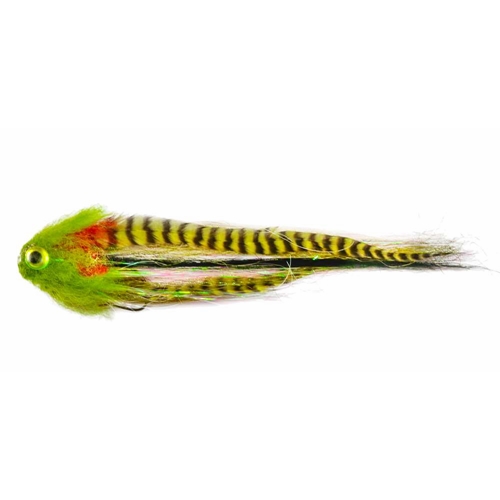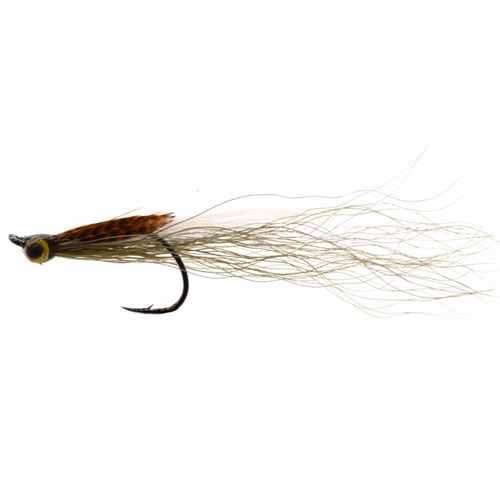Sea Trout Snake Flies
Sea Trout Snake Flies
Snake flies are extremely versatile. A Snake fishing fly can be fished slightly sub-surface with a floating line, fished deeper with a sink tip or intermediate, or even close to the bottom with a fast sinker. Waking versions are also available although the Jambo is a superb surface wake fly. The snake fly is essential for serious sea trout anglers fly box and equally deadly for salmon. Virtually all traditional patterns can be adapted to a snake. The modern way of tying a Snake fly is to utilise braid. All round these have to be one of the most successful Sea Trout and Salmon patterns available.
Sea Trout Snake Flies
Common names: 'Peal' (South West England), 'Sewin' (Wales) and 'White trout' (Ireland). Small sea trout have local names, such as 'Finnock', 'Whitling' and 'Herling'.
Sea trout are native to UK and are found widely in Scandinavia, Iceland, the Baltic and many parts of the European Atlantic seaboard as far south as Portugal. Non-native populations are also found in some rivers in Chile, Argentina, Australia and New Zealand and the eastern seaboard of North America.
The sea trout has a life history that is similar to that of the salmon. Following a variable period of freshwater residence and growth they migrate to the sea as a smolts. The marine environment provides sea trout with greatly increased opportunities for feeding and growth before returning to fresh water to spawn.
The sea trout is a migratory form of the common and widely distributed brown trout (Salmo trutta L.). It migrates to the sea to feed and grow before returning to fresh water to spawn. Populations of brown trout may consist of almost exclusively sea trout or resident (freshwater) brown trout. However, many freshwater systems are characterised by the common occurrence of both types. The reasons for this are not fully known. However it is believed that the tendency of different systems to produce migratory trout rather than residents reflects a number of biological, genetic and environmental factors that are currently not fully understood. Nevertheless, sea trout can be produced from eggs and milt stripped from adult fish migrating up rivers from the sea.
Young juvenile sea trout ('parr') are indistinguishable from their resident cousins. Trout parr are characterised by their rotund body shape with a short blunt head, rounded fins, and red and brown spots. They live in the slower areas of rivers including pools and backwaters. They may also live in the margins of lakes. Trout parr that are destined to become sea trout remain in fresh water for a period of 1 and 5 years but most migrate to sea after 2 or 3 years. The rate at which the young fish grow and the age at which they enter the sea varies over their geographical range. Female parr are more likely to become smolts and migrate to sea than males.
During the early spring, many of the older and larger parr begin to turn into smolts. Sea trout smolts tend to be larger than salmon smolts. Typically, they are 5-9 inches long (13-23 cm) and distinguished by their spotted silvery flanks and yellow pectoral fins. Migration downstream takes place in April, May and early June. The main stimuli for the onset of movement downstream are thought to be increases in river flow ('spates'), changes in water temperature, lunar phase and time of day.
























